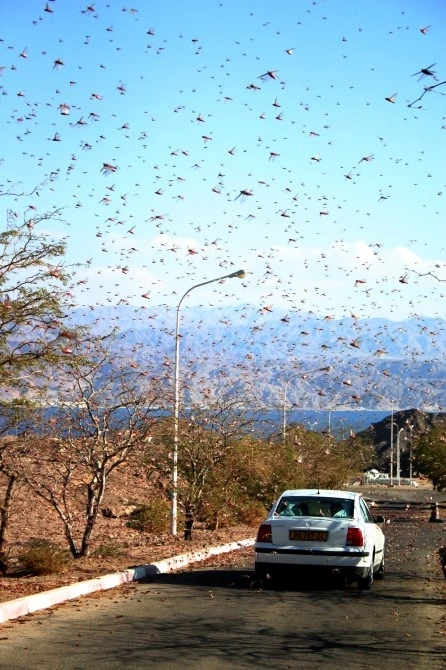It seems that locusts, the bane of farmers the world over, have served some purpose after all. With the aid of a wind tunnel and a high-speed digital video camera, scientists have captured the changes in the shape of the locust's wings during flight and created, for the first time, a computer model that recreates the airflow and thrust generated by their complex flapping movement. Modeling the aerodynamic secrets brings us a step closer to creating miniature robot flyers with the maneuverability and energy efficiency of an insect - such micro-aircraft would likely have huge benefits for search and rescue, military activities and inspecting hazardous environments.
The research was conducted by Dr John Young, from the University of New South Wales (UNSW) in Australia, and a team of animal flight researchers from Oxford University's Department of Zoology. They found that the so-called 'bumblebee paradox', which claims that insects defy the laws of aerodynamics, is untrue and that modern aerodynamics can accurately model insect flight.
"Biological systems have been optimized through evolutionary pressures over millions of years, and offer many examples of performance that far outstrips what we can achieve artificially," said Dr Young, a lecturer in the School of Aerospace, Civil and Mechanical Engineering at the Australian Defence Force Academy (UNSW@ADFA).
"An insect's delicately structured wings, with their twists and curves, and ridged and wrinkled surfaces, are about as far away as you can get from the streamlined wing of an aircraft," Dr Young said.
"Until very recently it hasn't been possible to measure the actual shape of an insect's wings in flight – partly because their wings flap so fast, and partly because their shape is so complicated."
"Locusts are an interesting insect for engineers to study because of their ability to fly extremely long distances on very limited energy reserves."
Once the computer model of the locust wing movement was perfected, the researchers ran modified simulations to find out why the wing structure was so complex.
In one test, they removed the wrinkles and curves but left the twist, while in the second test they replaced the wings with rigid flat plates. The results showed that the simplified models produced lift but were much less efficient, requiring much more power for flight.
"The message for engineers working to build insect-like micro-air vehicles is that the high lift of insect wings may be relatively easy to achieve, but that if the aim is to achieve efficiency of the sort that enables inter-continental flight in locusts, then the details of deforming wing design are critical," Dr Young said.
The research paper, Details of Insect Wing Design and Deformation Enhance Aerodynamic Function and Flight Efficiency, was published in the September 18 issue of Science.




